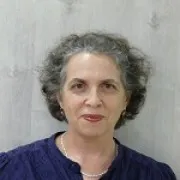Articles
Shapira-Lichter I, Oren N, Jacob Y, Gruberger M, & Hendler T. (2013). Portraying the unique contribution of the default mode network to internally-driven mnemonic processes .Proc Natl Acad Sci USA. 110:4950-5.
Raz, G., Jacob, Y., Gonen, T., Winetraub, Y., Soreq, E., Flash, T., Hendler, T. (2013) Cry for her or cry with her: Context-dependent dissociation of two modes of cinematic empathy reflected in network cohesion dynamics. Soc Cogn Affect Neurosci9:30-38 .
Admon, R., Milad, M. R., & Hendler, T. (2013). A causal model of post-traumatic stress disorder: disentangling predisposed from acquired neural abnormalities. Trends in Cognitive Sciences. 17: 337-47.
Raz, G., Jacob, Y., Gonen, T., Winetraub, Y., Flash, T., Soreq, E., & Hendler, T. (2014). Cry for her or cry with her: context-dependent dissociation of two modes of cinematic empathy reflected in network cohesion dynamics. Social Cognitive and Affective Neuroscience, 9, 30-38.
Gonen, T., Sharon, H., Pearlson, G., & Hendler, T. (2014). Moods as ups and downs of the motivation pendulum: revisiting reinforcement sensitivity theory (RST) in bipolar disorder. Frontiers in Behavioral Neuroscience, 8, 378.
Singer, N., Podlipsky, I., Esposito, F., Okon-Singer, H., Andelman, F., Kipervasser, S., ... & Hendler, T. (2014). Distinct iEEG activity patterns in temporal-limbic and prefrontal sites induced by emotional intentionality. Cortex, 60, 121-138.
Kinreich, S., Podlipsky, I., Jamshy, S., Intrator, N., & Hendler, T. (2014). Neural dynamics necessary and sufficient for transition into pre-sleep induced by EEG neurofeedback. NeuroImage, 97, 19-28.
Hendler, T., Gonen, T., Harel, E. V., & Sharon, H. (2014). From circuit activity to network connectivity and back: The case of obsessive-compulsive disorder. Biological Psychiatry, 75, 590-592
Raz, G., & Hendler, T. (2014). Forking cinematic paths to the self: neurocinematically informed model of empathy in motion pictures. Projections, 8, 89-114.
Abraham, E., Hendler, T., Shapira-Lichter, I., Kanat-Maymon, Y., Zagoory-Sharon, O., & Feldman, R. (2014). Father’s brain is sensitive to childcare experiences. Proc Natl Acad Sci USA, 111, 9792- 9797
Amar, D., Yekutieli, D., Maron-Katz, A., Hendler, T., & Shamir, R. (2015). A hierarchical Bayesian model for flexible module discovery in three-way time-series data. Bioinformatics, 31, i17-i26.
Ben Simon, E., Oren, N., Sharon, H., Kirschner, A., Goldway, N., Okon-Singer, H., Tauman, R., Deweese, M.M., Keil, A., & Hendler, T. (2015). Losing neutrality: The neural basis of impaired emotional control without sleep. Journal of Neuroscience, 35, 13194-13205.
Gilam, G., Lin, T., Raz, G., Azrielant, S., Fruchter, E., Ariely, D., & Hendler, T. (2015). Neural substrates underlying the tendency to accept anger-infused ultimatum offers during dynamic social interactions. NeuroImage, 120, 400-411.
Okon-Singer, H., Hendler, T., Pessoa, L., & Shackman, A.J. (2015). The neurobiology of emotion–cognition interactions: fundamental questions and strategies for future research. Frontiers in Human Neuroscience 9, 58.
Glikmann-Johnston, Y., Oren, N., Hendler, T., & Shapira-Lichter, I. (2015). Distinct functional connectivity of the hippocampus during semantic and phonemic fluency. Neuropsychologia, 69, 39-49
Vaisvaser S., Modai S., Farberov L., Lin T., Sharon H., Gilam A., Volk N., Admon R., Edry L., Fruchter E., Wald I., Bar-Haim Y., Tarrasch R., Chen A., Shomron N., and Hendler T. (2016). Neuro-epigenetic indications of acute stress response in humans: the case of microRNA-29c. PloS One (accepted)
Keynan, J.N, Meir-Hasson, Y., Gilam, G., Cohen, A., Jackont, G., Kinreich, S., Ikar, L., Or-Borichev, A., Etkin, A., Gyurak, A., Klovatch, I., Intrator, N., & Hendler, T. (2016). Limbic activity modulation guided by fMRI-Inspired EEG improves implicit emotion regulation. Biological Psychiatry (accepted)
Gonen, T., Soreq, E., Eldar, E., Ben-Simon, E., Raz, G., & Hendler, T. (2016). Human mesostriatal response tracks motivational tendencies under naturalistic goal conflict. Social Cognitive and Affective Neuroscience, 11, 961-972.
Shapira-Lichter, I., Klovatch, I., Nathan, D., Oren, N., & Hendler, T. (2016). Task-specific aspects of goaldirected word generation identified via simultaneous EEG–fMRI. Journal of Cognitive Neuroscience 28, 1406-1418.
Meir-Hasson, Y., Keynan, J. N., Kinreich, S., Jackont, G., Cohen, A., … Hendler, T. & Intrator, N. (2016). One-Class FMRI-Inspired EEG Model for Self-Regulation Training. PloS One, 11, e0154968.
Gazit, T., Andelman, F., Glikmann-Johnston, Y., Gonen, T., Solski, A., Shapira-Lichter, I., ... & Hendler, T. (2016). Probabilistic machine learning for the evaluation of presurgical language dominance. Journal of Neurosurgery, 1-13.
Maron-Katz, A., Vaisvaser, S., Lin, T., Hendler, T., & Shamir, R. (2016). A large-scale perspective on stress-induced alterations in resting-state networks. Scientific Reports, 6.
Lin, T., Simchovitz, A., Shenhar-Tsarfaty, S., Vaisvaser, S., Admon, R., … Hendler, T. & Soreq, H. (2016) Intensified vmPFC surveillance over PTSS under perturbed microRNA-608/AChE interaction. Translational Psychiatry, 6, 1-8.
Raz, G., Touroutoglou, A., Wilson-Mendenhall, C., Gilam, G., Lin, T., .... Hendler, T. & Feldman Barrett, L. (2016). Functional connectivity dynamics during film viewing reveal common networks for different emotional experiences. Cognitive, Affective, & Behavioral Neuroscience, 1-15.
Singer S., Jacobi N., Lin T., Raz G., Shpigelman L., Gilam G., Granot R., Hendler T. (2016) Common modulation of limbic network activation underlies the unfolding of musical emotions and its temporal attributes. NeuroImage (accepted)
Raz G., Shpigelman L.,Jacob Y., Gonen T., Benjamini Y. and Hendler T. (2016) Psychophysiological wholebrain network clustering based on connectivity dynamics analysis in naturalistic conditions. Human Brain Mapping (accepted)
Chapters and Reviews
Gruberger M, Ben-Simon E, Levkovitz Y, Zangen A and Hendler T (2011) Towards a neuroscience of mind-wandering. Front. Hum. Neurosci. 5:56.
Y. Jacob, D. Papo, T. Hendler and E. Ben-Jacob (2012). Functional Holography and Cliques in Brain Activation Patterns, Advances in Brain Imaging, Dr. Vikas Chaudhary (Ed.), ISBN: 978-953-307 955-4, InTech, (pp.101-126).
Gruberger M., Ben-Simon E., & Hendler T. Neuroimaging Approaches to the Stream of Consciousness: Problems lost and found A book chapter in Consciousness: Its nature and functions. Edited By: S. Kreitler and O. Maimon. (pp. 311-324). Nova Publishers, Hauppage, NY. 2012.
Jamshy, S., Perez, O., Yeshurun, Y., Hendler, T., & Intrator, N. Searchlight based feature extraction. In Machine Learning and Interpretation in Neuroimaging, Lecture Notes in Computer Science, (pp. 17-25). Springer Berlin Heidelberg, 2012.
Raz, G., Hagin, B., & Hendler, T. “E-Motion Pictures of the Brain: Recursive Paths between Affective Neuroscience and Film Studies,”Arthur P. Shimamura (editor), Psychocinematics: Exploring Cognition at the Movies (pp. 285-313). (New York: Oxford University Press
Gilam, G., & Hendler, T. Deconstructing Anger in the Human Brain. In Current Topics in Behavioral Neurosciences. Springer Berlin Heidelberg, 2016.
Gilam, G., Hendler, T. (2016) With love, from me to you: Embedding social interactions in affective neuroscience. Neuroscience and Biobehavioral Reviews 68, 590-601. 5:56. doi: 10.3389/fnhum.2011.00056
Jacob Y., Papo D., Papo D., Hendler T. and Ben- Jacob E. (2012). Holography and cliques in brain activation patterns. Chapter in Advances Brain Imaging edt. (PP 101-126), Tech Publishing.
Raz G., Hagin B. and Hendler T. (2013) E-motion pictures of the brain: recursive paths between cinema and neuroscience. A Shimamura (ed) Psychocinematics: The Aesthetic Science of Movies. Oxford University Press. DOI: 10.1093/ acprof:oso/9780199862139.001.0001




